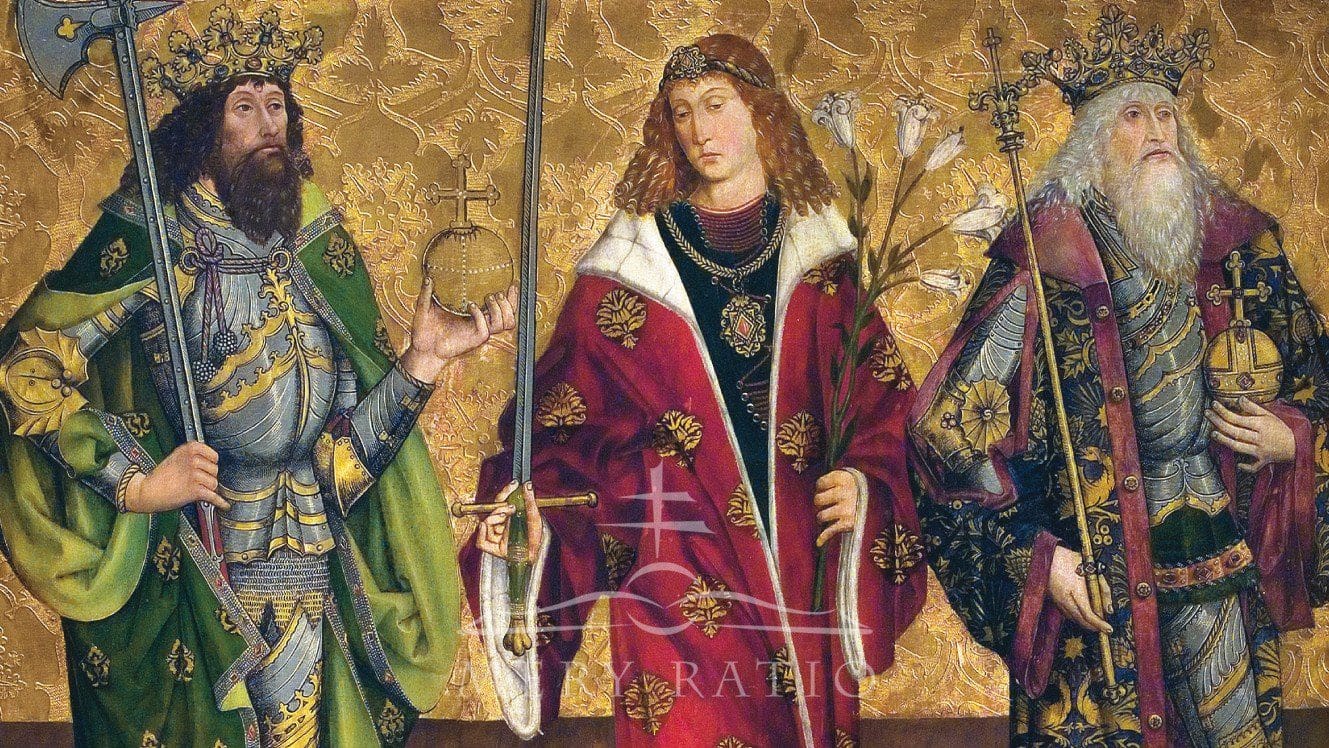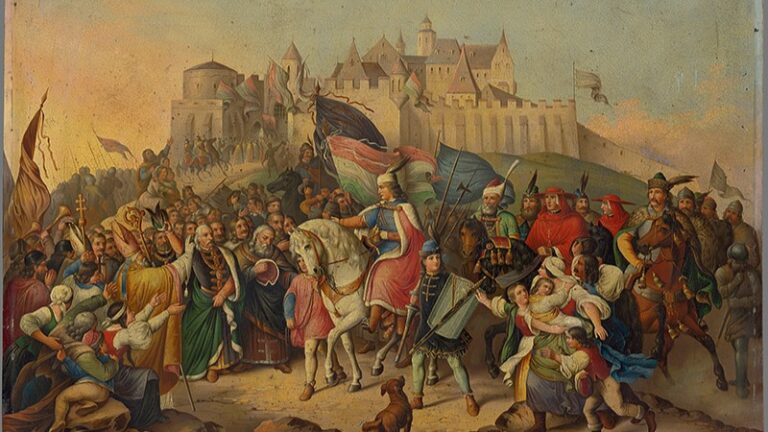27 June is the Day of Hungarian Border Guards. The geographic location of our country and the very fact that it is the eastern bulwark of Western Christianity obliged it in the past and is still predestining it today to be one of the guardians of European civilisation and the peace of the continent.
After the Hungarian (re)conquest of the Carpathian Basin by pagan Hungarian Prince Árpád in 895—it is likely that some Hungarian outposts had taken possession of the Carpathian basin already before the 9th century—, the establishment of border fortifications, i.e. strips of territory designed to defend against enemy attacks, began immediately. The state border based on this idea was already formed during the period of the organisation of the Kingdom of Hungary. St Stephen, the founder and first king of the Hungarian State, consciously designated border counties and ordered the protection of the border fortifications. His efforts were later undertaken and completed by King St Ladislaus—thus, the organisation of medieval Hungary’s border defence and the consolidation of border surveillance can mainly be attributed to him. Thanks to this, St Ladislaus became the patron saint of border guards; hence,
St Ladislaus’ Day on 27 June is also the Day of Hungarian Border Guards.
Border counties of the Kingdom of Hungary were controlled by border land-stewards. Unlike in other counties, castles in the border counties were not clan-owned castles (castles of noble families based partly on blood relations), but hillforts built along the roads leading out of the country (protected fortifications surrounded by ramparts and ditches). Border counties were divided into two parts: inner inhabited and outer uninhabited or sparsely populated areas—these two were separated by border fortifications full of obstacles, on which access was ensured by barrier-free sections and gates. The country was not bounded by a single border fortification: the system was made up of external and internal defence-in-depths. Therefore, the area of the border county was not necessarily contiguous.
The population of Hungary felt the need for a well-organised border guard as early as the 11th century, as the eastern part of the country was particularly exposed to Cuman (Kun) attacks at the time. Despite all efforts, the great Mongol Invasion of 1241–1242 had tragic demographic consequences: the Hungarian population, which suffered enormous destruction, became scarce, and the ruler ordered the settlement of foreign ethnic groups in its place, intending to replace the lost workforce. It is not an exaggeration to say that the process that resulted in the ethnic diversity of the Kingdom of Hungary, and then culminated in the Treaty of Trianon on 4 June 1920 truncating the country, began at this very time.
From the 13th century onwards, the border fortress system, which provided more secure border protection for Hungary, defended the southern borders of the country against the attacks of the increasingly strong Islamic Turks in the 14th century. The border guards of the era were the brave border fortress knights, who fought heroically and sacrificed their lives not only for Hungary but also for the whole of Christian Europe until the end of Turkish pressure, a danger that lasted for several centuries. After the end of the Turkish threat, border regions were established to protect the southern and eastern borders of our country, which secured the national frontier for roughly 200 years. Following the Austro–Hungarian Compromise of 1867, however, these regions gradually ceased to exist. The Hungarian Parliament regulated the situation of border surveillance by law: Act VIII of 1903 decided on the establishment of the Border Police. The organisation, which functioned effectively until the end of World War I, had a unit for border surveillance, border traffic control, and immigration police.
Then, the limitations of the Treaty of Trianon of 1920 influenced the border surveillance of Hungary between the two world wars.
The country had to ask for permission to set up the Hungarian Royal Customs Guard, which formed a disguised part of the Royal Hungarian Army, given that the development of our country’s army after WWI was blocked. In addition, the organisation also guarded the state border, ensured border protection and control of local border traffic, and performed customs duties as well. In 1932, the Customs Guards was reorganised and renamed Hungarian Royal Border Guard, then in 1938, it was merged into the Hungarian Defence Forces under the name of ‘border hunters’.
After World War II, border surveillance was carried out by the Border Police, which then merged into the State Security Police on 1 January 1950. During this period, a total border surveillance system was built on the southern and western border sections of the country: in 1950, a 15-kilometer border zone was established in the southern border section, and in 1952, in the western border section as well, within which borderlines of 500 and 50 meters were set up, which could only be entered with a police or border guard permit. Moreover, the 50-meter borderline could only be entered by border guards. In the western border section, a technical lock made of barbed wire with a square mesh system was created next to the borderline, and in the south and west, an anti-personnel minefield was planted along the state border in a length of 318 kilometres. Although in 1956, the minefields were eliminated and the mines were cleared, in 1957, it was decided that they were still needed in the western border section. The southern border zone was finally abolished in 1965, and the western in 1969. The complete clearing of the minefields finally ended in 1971, and instead, a weak-current SZ-100 type electrical signalling system used in the Soviet Union at the time was built over a length of 248 kilometres.
The year 1989 is a milestone in the history of the Hungarian Border Guard,
as changes of historical significance began that year. The border lane was abolished on the western and southern border sections, and the electric signalling system was dismantled on the Austrian border. Then, in 1989, Hungary joined the 1951 Geneva Convention, also known as the 1951 Refugee Convention. As a result of the changes in Hungary, many East German (GDR) citizens came to Hungary because they hoped that they would succeed in reaching West Germany from here. Therefore, following the Pan-European Picnic that took place on 11 September 1989, the Hungarian government made the decision to open the border crossings of the western border section to them. Therefore, tens of thousands of GDR citizens were able to move to West Germany through Hungary until 9 November, the fall of the Berlin Wall.
From 1990, the construction of professional border surveillance began and with it a radical transformation of the organisation of the Border Guard as well. Even border guard vocational schools were established to train professional guards that worked until April 1998, when the last conscripts decommissioned from it. The scope of duties of the Border Guard has expanded and laws regulating border guarding have been continuously created ever since. In 2015, as a result of the European migration crisis, a technical force border was built in the southern part of Hungary, commonly known as the ‘southern border fence’, hoping to end the flow of refugees across Hungary.
Today, Hungarian border guards perform the same important task as their predecessors throughout history:
they protect Christian Europe to the best of their ability.







